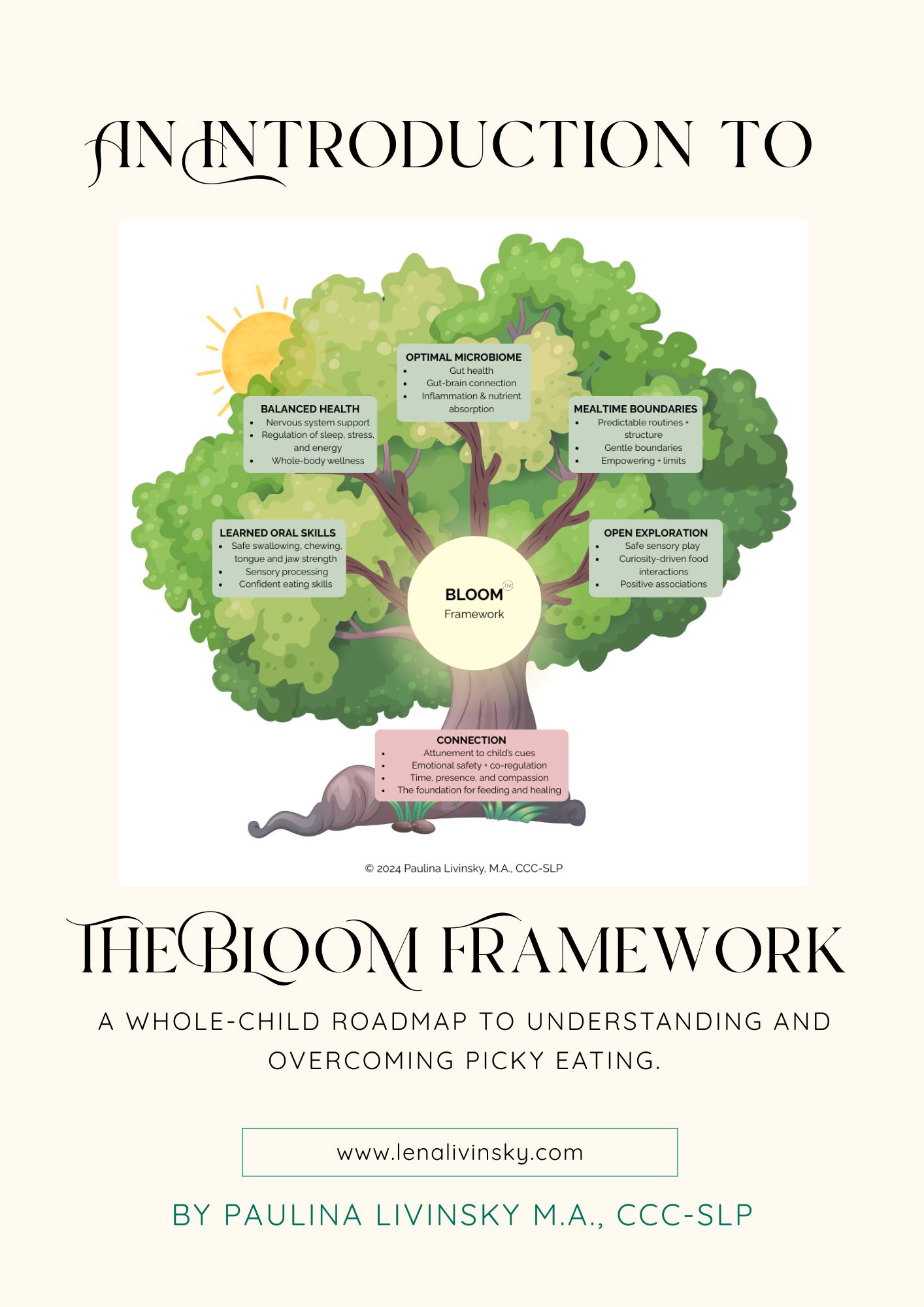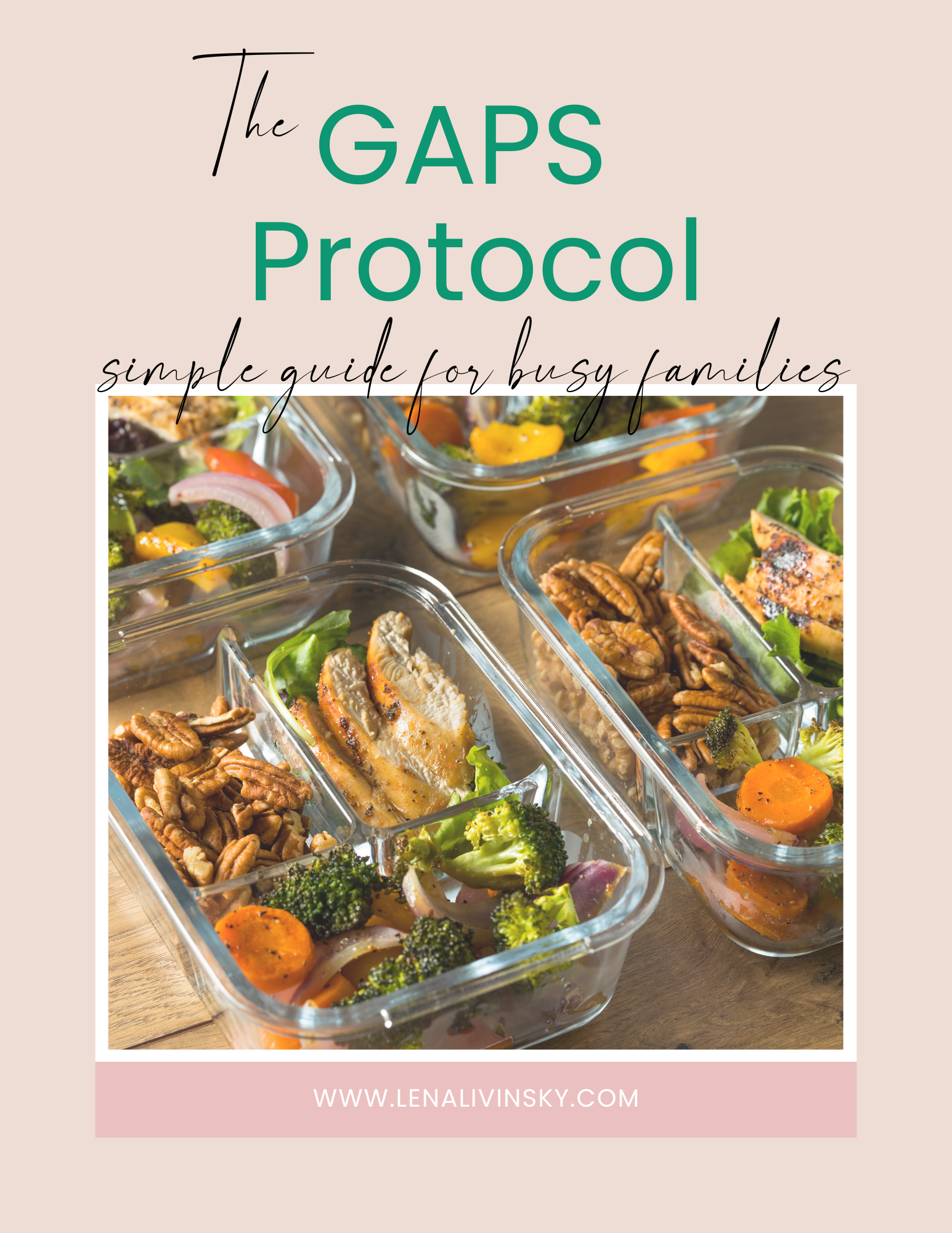
The Livin’Sky Podcast, Episode 10
If you’ve ever looked at your child across the dinner table and thought, “Why is this so hard? What am I missing?” — you’re not alone.
As a pediatric speech-language pathologist, holistic feeding specialist, and mom to a 3½-year-old picky eater myself, I know firsthand how exhausting it can be to prepare meals your child won’t touch, juggle family life, and wonder if you’re somehow “doing it wrong.”
Here’s the truth: picky eating isn’t the problem. It’s a signal — your child’s way of telling you that something deeper is going on in their body, their brain, or their environment.
And when we shift from seeing picky eating as “bad behavior” to viewing it as communication, that’s when the real progress begins.
The Problem With the “They’ll Grow Out of It” Myth
Yes, some kids go through short phases of food refusal. But research — and my own work with families — shows that many don’t just “grow out of it.”
Right now, around 25% of kids are considered true picky eaters. I believe the number is even higher (closer to 50%) because of our modern environment:
- Heavily processed, low-nutrient foods
- Depleted soils
- 80,000+ chemicals we come into contact with daily
- More time indoors and less exposure to natural light
- Increased stress and screen time
All of these factors can impact digestion, sensory processing, and appetite — making picky eating worse over time.
The BLOOM™ Framework: My Whole-Child Approach to Picky Eating
Instead of focusing on “getting more bites in,” I look at picky eating through my 5-pillar BLOOM™ Framework:
- Balanced Health – Is there an underlying medical issue, nutrient deficiency (like zinc, iron, or magnesium), constipation, reflux, or poor sleep affecting your child’s appetite?
- Learn Oral Skills – Can your child physically chew and swallow certain textures safely, or are oral-motor delays making some foods feel impossible?
- Optimal Microbiome – Is your child’s gut health supporting healthy hunger signals and taste preferences, or are bad bacteria driving sugar cravings?
- Open Exploration – Are you giving your child pressure-free opportunities to interact with new foods outside of mealtime?
- Mealtime Boundaries – Is there structure around when, where, and how your family eats to create safety and predictability?
These pillars aren’t separate — they’re deeply connected. A small shift in one can ripple through all the others.
Small Shifts Can Make a Big Impact
You don’t have to fix all five pillars at once. Start small:
- Swap ultra-pasteurized milk for low-heat pasteurized organic milk.
- Bake a homemade cookie together instead of buying a packaged brand.
- Add more outdoor time to support circadian rhythm and gut health.
Even the tiniest steps — when they’re the right ones — can create real change.
Why Connection Comes First
Before tackling diet, skills, or microbiome, I encourage families to focus on connection. Eating is a vulnerable act. When your child feels emotionally safe with you at the table, their nervous system can relax, making it easier for them to explore new foods.
Progress doesn’t always look like taking a bite. It might look like tolerating a new food on the plate, licking something new, or simply feeling less anxious at mealtime.
A Personal Note: Big Changes at Home
This week also marks the last week of my son Nate’s all-day daycare — exactly two years to the day. It’s bittersweet; he’s made wonderful friends there. But in September, he’ll start a half-day nature preschool, a Montessori/Reggio Emilia-inspired afternoon program three times a week, and spend two half days with his grandparents.
Will life get more hectic? Definitely. I’ll be shuttling him around and packing more snacks and lunches. But it will also give me more control over his food, more time with family, and more time outside — all of which can boost his microbiome and overall health. And that, in turn, can help with his own picky eating tendencies.
Final Thoughts
If your gut says, “This is more than just picky eating,” trust it. Your child may be telling you there’s an underlying need — whether it’s medical, sensory, or microbiome-related.
Addressing those root causes is what turns mealtimes from stressful to connected. And it’s what helps children move from surviving on a handful of “safe” foods to thriving with variety.
Resources
Connect with Lena
💌 Newsletter: Get weekly support and guidance
🌐 Website: lenalivinsky.com
📧 Questions? Reach out – I’m here to help
Remember, sweet mama: Trust your journey, trust your baby, trust yourself. You’ve got this! 💚
FREE WORKSHOP FOR PARENTS OF PICKY EATERS:

BLOOM Framework at a glance:

Here are some other FREE guides which may interest you!




